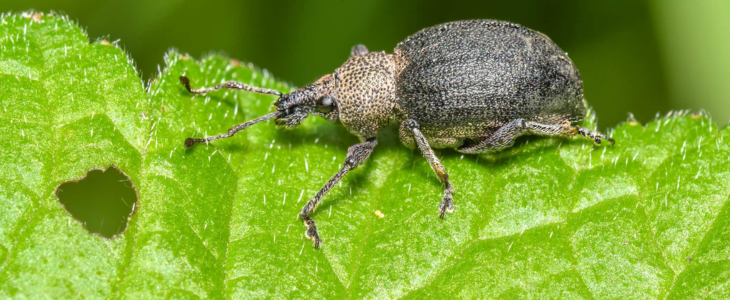
by Jay Watson, Co-Executive Director, New Jersey Conservation Foundation
This time of year, with a summer’s worth of mosquito bites newly in the rearview, a reprieve from thinking about insects is probably welcome. But not to Marcello Mangano, director of the Phillip Alampi Beneficial Insect Rearing Laboratory (PABIL). And for that, all of us in this state we’re in should be grateful.
Mangano leads a team of scientists at the facility in West Trenton, which falls under the purview of New Jersey’s Department of Agriculture. Nicknamed “the bug lab,” it’s where insects that are less pesky than important to our ecosystem multiply under the watchful eyes of researchers and entomologists. The results, often invisible to the public, can be hugely consequential: Since its launch in 1985, PABIL has been fighting to protect the $290 million we, as a state, lose annually to crop loss or damage caused by agricultural pests. Their efforts have protected more than 100,000 acres of soybeans from Mexican bean beetles. Even purple loosestrife, a noxious weed that tears a path of destruction everywhere it grows, has found a formidable enemy in the lab, which has released more than 1.5 million beetles to control loosestrife populations.
“When people hear about the work we do they get super happy,” Mangano said. He makes a strong case for why that’s the right reaction. Though PABIL’s an insect factory that churns out weevils, beetles, and parasites by the thousands, New Jersey farmers both organic and traditional rely on it to keep the crops that make their way to our kitchen tables healthy. There’s even a national security aspect to PABIL’s bug deployment: Consider our position on the map, Mangano urged. Because of the volume of importation that happens here, at the ports of New Jersey and nearby ports in New York and Philadelphia, “in my mind we serve as a first line of defense in mitigating problems introduced by invasive species that slip through the cracks,” i.e., those that hitch a ride overseas.
The natural approach to beating back crop-wrecking organisms has been around a long time. In 324 BC, Chinese growers used ants to feed on citrus bugs. Pesticides gained ground in the 1950s, but in 1962, when Rachel Carson’s “Silent Spring” was published, the public started paying attention to the environmental havoc they wreaked. Now, Mangano said, many New Jersey farmers use a hybrid system for managing invaders, relying on both biocontrol – the scientific term for the lab’s work – and chemicals.
Using living organisms to manage pests, weeds, and diseases is an imperfect science. Zeroing in on the right bugs to unleash and getting them approved by government officials for widespread use can take more than a decade. Mangano uses the word “mitigate” rather than “eliminate” when he talks about the lab’s victories, because generally the creatures PABIL rears in its humidity- and temperature-controlled spaces don’t fully wipe out offenders.
An example is the purple loosestrife work the lab initiated years ago: “It possibly came in as an ornamental, but it did something unfortunate,” he said. “It was pretty in July, when you’d see it bloom purplish blue in ditches or waterways.” But it displaced native plants and affected native turtles. The beetles the ‘bug lab’ propagated to control it spread themselves out and effectively decimated the plant. But “now you’ll see one or two spotting the environment.” It doesn’t matter: Biological control often is self-sustaining, with beneficial bugs integrating into their new surroundings and staying put. “The projects self-perpetuate.”
PABIL is open for tours, which affords Mangano a chance to persuade the public that while the work done there can make people squeamish, it’s important. “I’ve never met anybody who’s walked away saying, ‘Oh, this is silly,'” he said. “They always say, ‘I had no idea this was happening.'”
They should know, of course. “We go undetected for the most part,” he said. “But what we do touches so many parts of the state and potentially the country. It doesn’t just impact the food you eat, it affects the trees, the forests, the streams, the lakes.”
Other beneficial insects are being reared to address invasive plants like mile-a-minute and Japanese knotweed; and non-native invasive insects like Mexican bean beetle and brown marmorated stink bugs.
This biological control is a part of what is known as Integrated Pest Management. It strives to rely on biological solutions to pest problems while reducing the need for harmful broad spectrum chemical applications.
As world-famous scientist E.O. Wilson once said, “insects are the little things that run the world.”
For information on what’s happening at the bug lab, visit https://www.nj.gov/agriculture/divisions/pi/prog/buglab/.
To learn more about preserving New Jersey’s land and natural resources, visit the New Jersey Conservation Foundation website at www.njconservation.org or contact me at info@njconservation.org.
